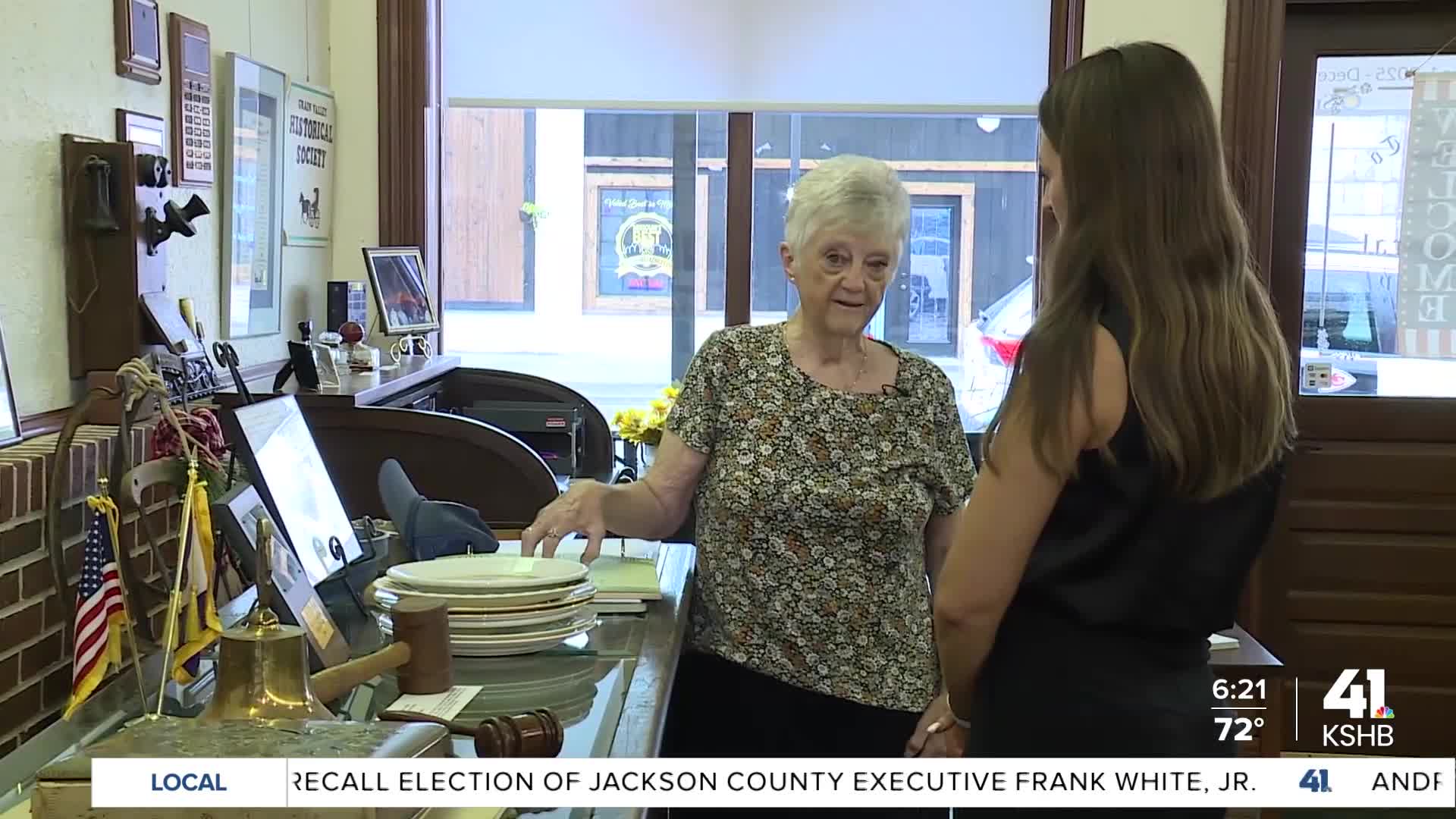KSHB 41 reporter Claire Bradshaw covers eastern Jackson County, including Blue Springs and Independence. Share your story idea with Claire.
—
A traveling Smithsonian exhibit arriving in Grain Valley this November will give students and residents a chance to explore both national and local history, including how the town played a pivotal role in transportation development across the Kansas City area.
The exhibit, titled "Voices and Votes," will be hosted at the Grain Valley Historical Society. It will feature displays on how civic engagement has shaped local decisions, including infrastructure.
Seventh-grade students will have the opportunity to explore this history up close, learning about the development of transportation routes that have connected communities in eastern Jackson County for generations.
One of the most interesting historical connections is R.D. Mize Road, which predates both Interstate 70 and Highway 40.
"It's the crookedest road in Jackson County, I think," said Marty Napier, of the Grain Valley Historical Society. "They always referred to it as the Old Rock Road. Well, now I understand why, because that's actually, it was just a rock road. No asphalt, no concrete, just rocks."

Built at the turn of the 20th century, R.D. Mize Road was the first to truly connect eastern Jackson County. The route begins in Independence, going south, then winds its way to Blue Springs, down to Grain Valley, and finally ends at Oak Grove.
What makes this road particularly significant is that it was state-funded, and at that time, Grain Valley was the only town it directly passed through, according to Napier.
"I am still trying to find legal documentation, and all I really have are a couple of stories that were written by a man named Seabolt," she said. "That was a prominent Grain Valley family at that time, and he wrote about the fact that while Grain Valley was incorporated in late 1884, I believe, they unincorporated because the state was not going to pay for the road to go through Grain Valley."
Napier believes this suggests Grain Valley's elected officials may have found a loophole to secure state funding for R.D. Mize Road's construction.

Napier credits securing the Smithsonian exhibit because she framed the grant application as a field trip opportunity for students.
"What does that have to do with voices and votes? It is that many things were dependent on how legislators, how the people voted, whether or not they voted to have the roads," Napier said.
The exhibit will also explore how Grain Valley voted to get public water and the event that changed votes to "yes."
Residents can visit the Grain Valley Historical Society Nov. 1 through Dec. 13 to learn more about the train, R.D. Mize Road, Highway 40, and Interstate 70 — all important transportation connectors for the town throughout its history.
—
This story was reported on-air by a journalist and has been converted to this platform with the assistance of AI. Our editorial team verifies all reporting on all platforms for fairness and accuracy.




